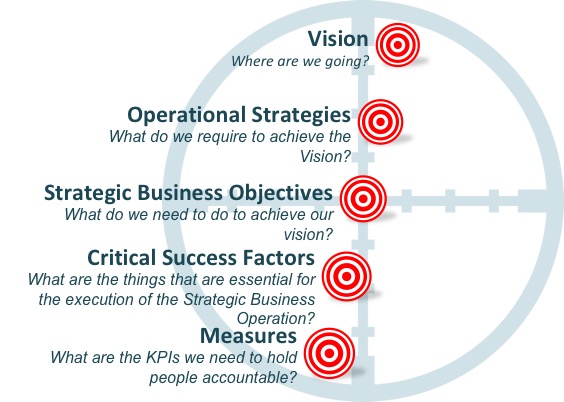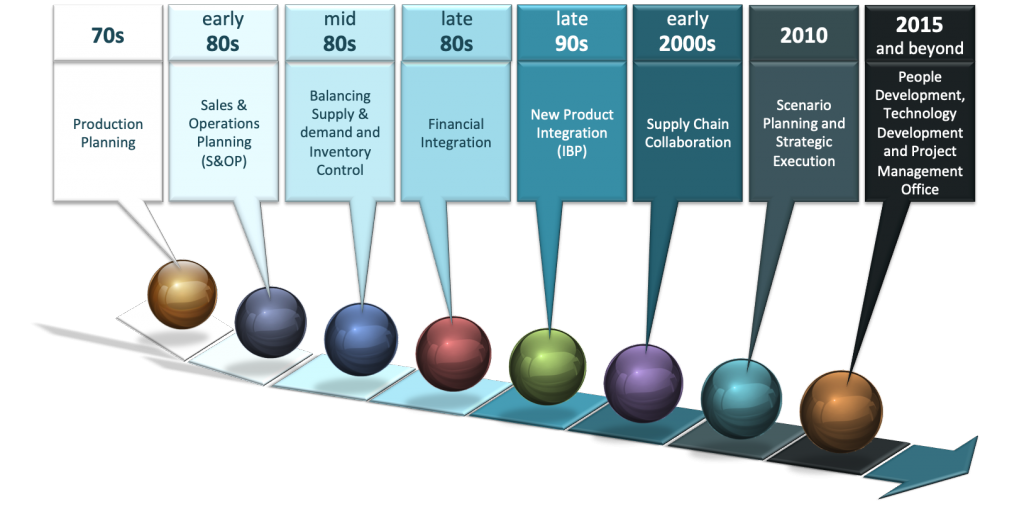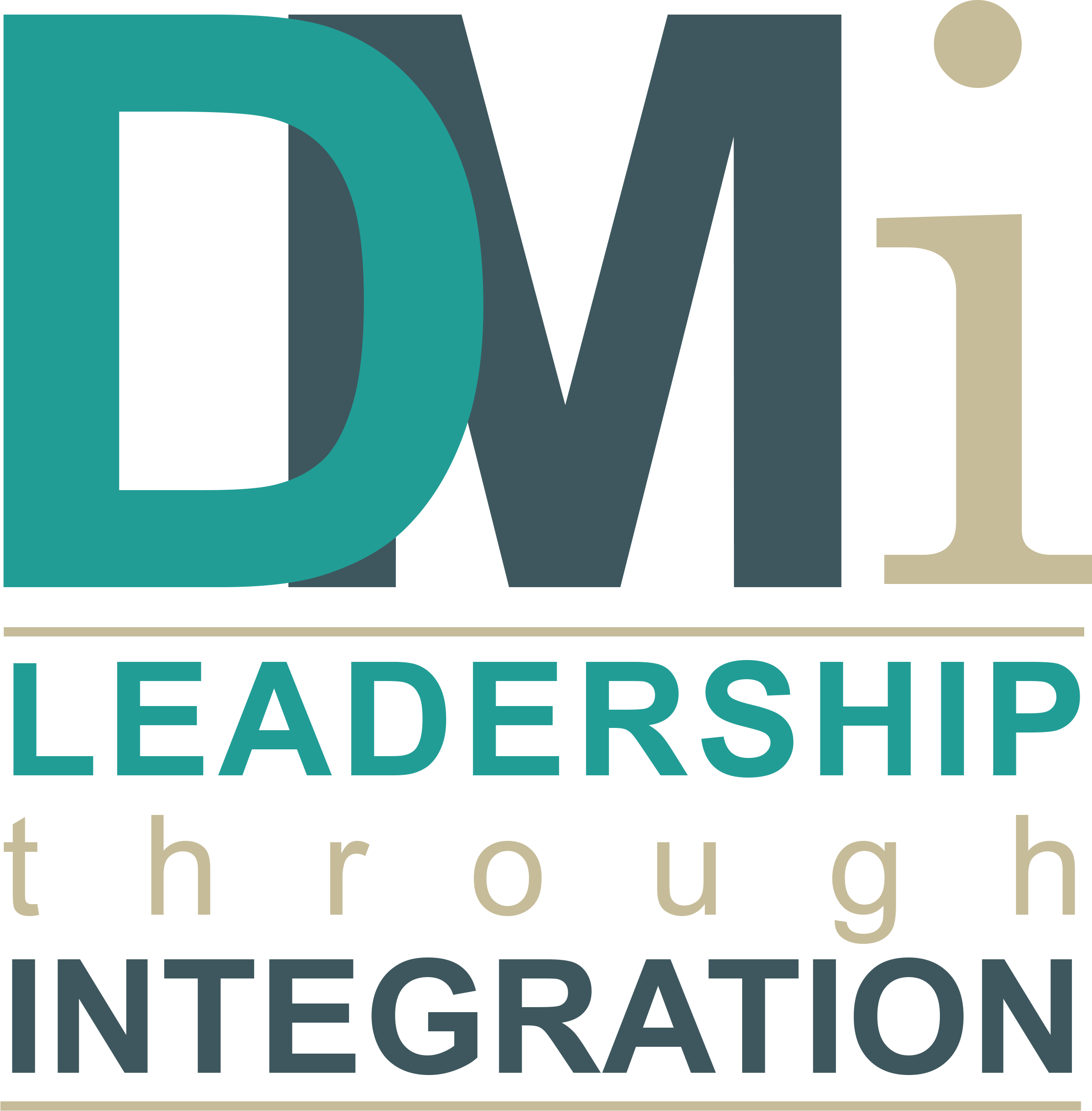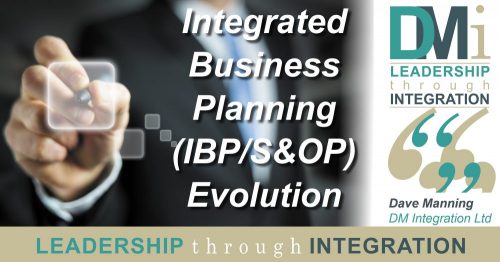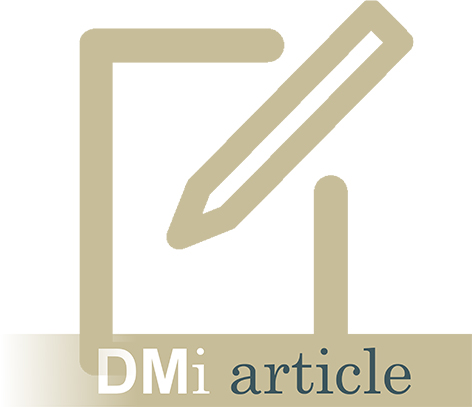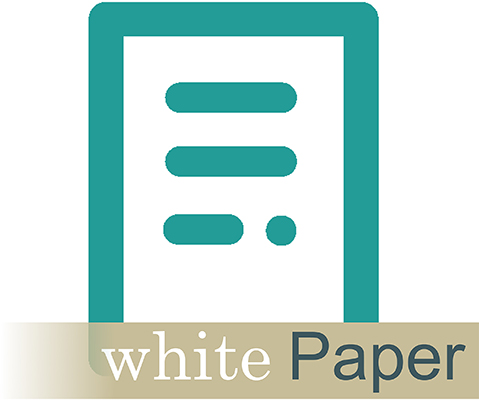Integrated Business Planning (IBP/S&OP) Evolution
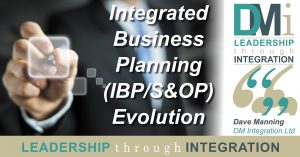
DMi Integrated Business Planning Evolution
Since the 1980’s the primary business management process for many manufacturing and supply chain management companies has been Sales and Operations Planning (S&OP). S&OP was originated by Ollie Wight in the early 1980’s, in fact the author of this article attended the first ever S&OP Workshop conducted in the UK in 1983. The S&OP language has been adopted globally. However not always adopted are the fundamental behaviours and practices to deliver the potential business benefits that best practice S&OP can offer. The ‘ambition’ for S&OP has often been set far too low.
Pioneers and thought leaders of S&OP that has included Dave Manning, originally as a practitioner at Rolls Royce and Bentley Cars and for the past 30 years as a coach helping his clients develop and evolve S&OP, continue to experience that business performance and sustainability depend on the effectiveness of the IBP/S&OP process. The organisations who use IBP/S&OP as their primary management process achieve the most significant and wide-ranging business results. However, for many organisations the S&OP process has not developed, and the business and market conditions have changed. In other words, many organisations have not fully capitalized upon the evolution of the S&OP/IBP process.
Integrated Business Planning (IBP) is the latest evolution of S&OP – the next generation, although this has also been referred to as Integrated Business Management (IBM), Executive S&OP, Integrated Business Leadership as well as being given company specific labels such as Business Operating Planning (BOP) and iS&OP (Integrated S&OP). In other words, it represents the evolution of S&OP from its production planning roots into a fully integrated business management and strategic execution process. Those organisations who have adopted an integrated operating model have faired the best and continue to do so in an ever increasingly competitive global market place.
The Evolution of S&OP
To understand IBP compared to S&OP it is useful to understand the history of its evolution.
S&OP started to emerge as a concept in the 1970’s when it was generally referred to as Production Planning. The term S&OP was first adopted in 1981 which reflected the previously none existent development of coordination between commercial and supply functions. During the 1980’s further evolution brought a focus upon inventory management and the balancing of long term supply and demand. However, it was not until the late 1980’s that financial integration started to be embraced. At the end of the day business is about financial performance and at this point S&OP started to develop from a supply process to a business management process.
The next phase of evolution in the late 1990’s saw the integration of product and portfolio into the S&OP process. Many businesses and thought leaders have described this as one of the most valuable changes that have been adopted in the future focused business planning process. Product and portfolio management is a key element for many businesses. Traditional S&OP product and portfolio management did not integrate into the process as a formal step in the process and was often seen as a separate ‘floating’ process which was the domain of Innovation and R&D.
Following 2000 scenario and what if planning had been recognised as a critical business planning process. This was a significant development from supply and demand balancing which focuses upon the business implications of proposed changes on business performance and strategy.
In the ‘noughties’ 2000’s end to end supply chain collaboration was embraced – consumers, customers and suppliers were integrated into the process. A critical element of this development has been the challenge with critical suppliers and customers to develop relationships based upon collaboration and trust which can only be achieved through communication and transparency.
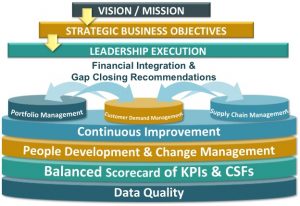
DMi Integrated Business Excellence
Since 1981 the focus of S&OP has moved towards a better understanding of the global and external environment and the alignment and integration of the internal functions of the company. There has also been a shift towards strategic execution and gap closure through integrated business planning – IBP. It was then that S&OP started to be referred to as IBP. The new identity was not intended to create a new process it was simply to reflect the evolution and development that had happened with S&OP since 1981. It was also intended to help companies recognise the potential of IBP over the very important but basic demand and supply focus of S&OP and therefore not engaging the attention of executives who are critical to connect the strategy to execution.
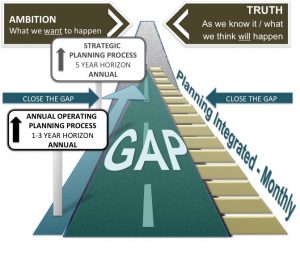
DMi – The Gap
Key principals of IBP include:-
- Decision making
- Long term focus
- Gap closure
- Roughly right not precisely wrong
- Process integration
- Aligned behaviours, KPI’s and critical success factors
- Strategic execution
- Growth!
